Will Lug & Carrie Help or Hinder IBD’s?
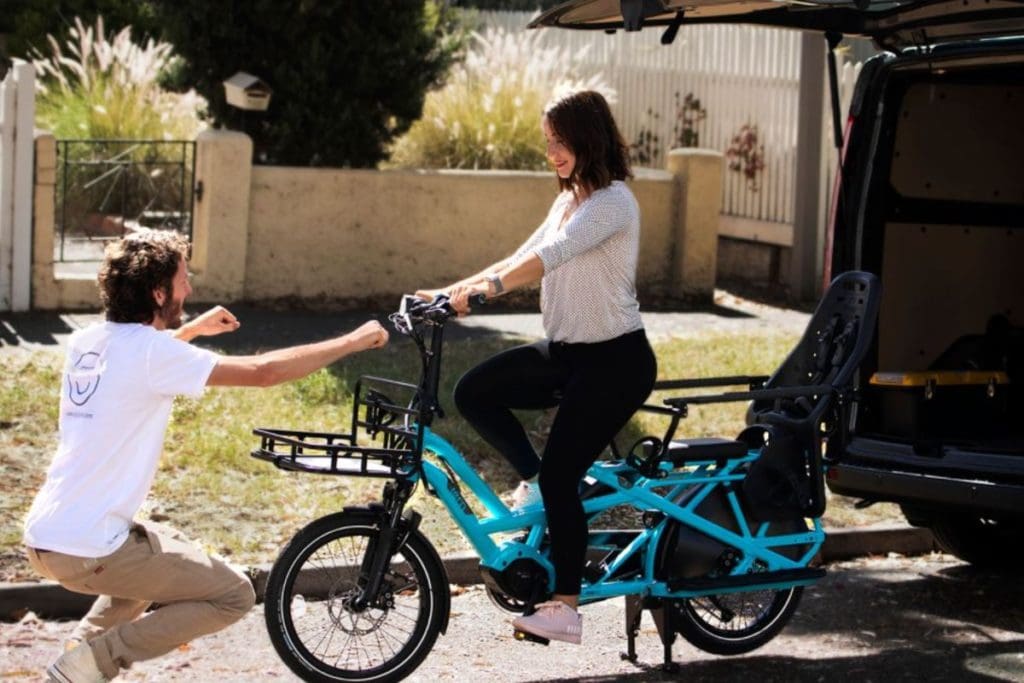
There’s a new bike business in town that operates with a significantly different business model to traditional bike shops.
Lug & Carrie customers don’t buy their bikes, they subscribe.
In return for a weekly subscription, they get a new fully assembled ebike delivered to their home by a trained staff member, plus some initial training on how to set up the bike and ride it.
They can also add a wide range of accessories to their weekly subscription, everything from bags to baby seats.
If they decide that the bike is not for them, they can give four weeks’ notice and have the bike, plus all accessories picked up from their home.
Insurance, mechanical maintenance, a high quality lock and a ‘Rider Rescue’ service in case of flat tyres, flat batteries other problems, is also included within the subscription price of either $44 or $61 per week, depending upon which bike is subscribed to.
So far, there are only two models that customers can choose from, both long wheelbase, utility ebikes designed for carrying kids, groceries and anything else the subscriber has in mind.
Clearly this is a completely different business model to how a traditional bike shop operates. We recently visited Lug & Carrie’s new office / showroom / warehouse in the inner northern suburbs of Melbourne to find out who is behind this concept that’s new to Australia, and how it’s going.
When we visited Lug & Carrie warehouse style premises, they had only just moved in, so they were still in set-up mode with basic furniture and little in the way of signage or fit-out. But there was an impressive amount of stock, either built or still in cartons.
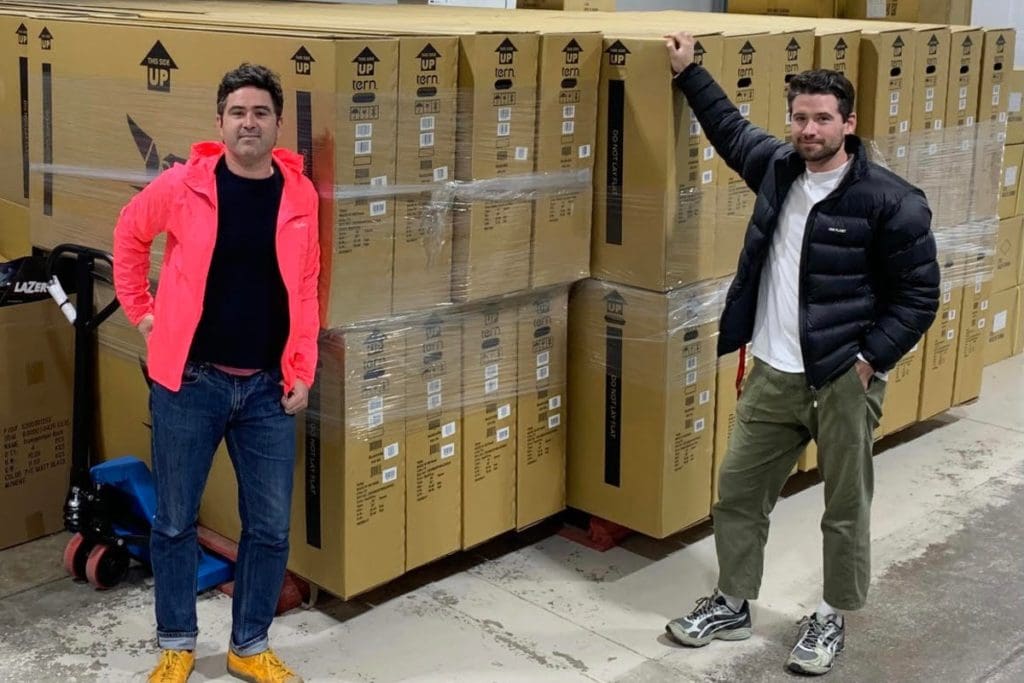
Lug and Carrie is run by founders Ben and Dan Carr
“Ben and I are brothers, I’m the oldest. He’s the youngest. There’s a couple in between,” Dan began.
“Four boys. We mostly grew up in country New South Wales, then country Victoria. Ben and I lived together while he was doing his undergraduate degree in design. We used to talk a lot about the different types of businesses that we thought we might get involved in, working with various design and brand-related stuff.
“I’ve worked in commercial and retail finance predominantly for 20 years. I mostly worked with the National Australia Bank, launched a few digital business lines and then ran those businesses. I also, did a bit of time in strategy and a bit of time in marketing early in my career.
“At the end of my career, I was running business lending and a part of that was running the asset finance portfolio. Everything from Toyota Hiace’s to big yellow goods, trucks and trailers, health equipment, all types of assets, we would finance in the asset finance portfolio.”
Through this experience, Dan learned a lot about financing and managing vehicle assets that would be directly applicable to Lug & Carrie.
He also developed a growing interest in the shift to lower emission technology and electrification.
“I was a member of the bank’s climate change working group, doing a lot of work with the Clean Energy Finance Corporation on how we could incentivise customers to move towards lower emissions technology and the role that finance could play in that.”
Meanwhile, youngest brother Ben had been carving out a completely different but equally impressive career.
“Before we launched Lug & Carrie 18 months ago. I was living in Germany, for 12 years, Ben revealed. I moved over there when I was 21.”
Whilst in Germany, Ben studied product design. He became part of an expert consultancy that designed trains on behalf of major clients such as Bombardier, Siemens and Deutsche Bahn.
He worked closely with city governments worldwide to customise the design of trains for each city’s public transport requirements.
“Public transport has to be for everyone,” Ben philosophised. It’s the best design if you don’t really notice it, if it just gets you from A to B and you think it’s a nice experience, then you’ve done a really good job.”
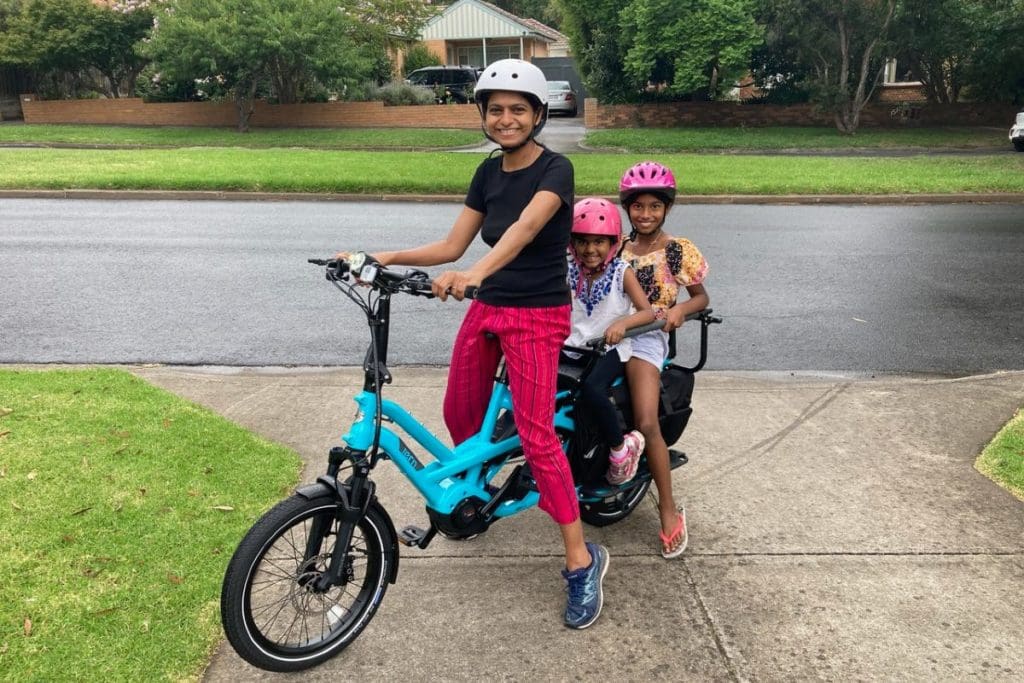
After about seven years Ben was ready to get off the train and find new challenges.
“I went to work for one of the first service design agencies that came out of Berlin called IXDS, which ended up being purchased by PWC and got to ride a nice little wave of digitalization of the transport industry.
“The first car-sharing platforms were starting to pop-up, ride-sharing. Uber was really hitting its stride, bike share was happening with a smartphone. A lot of the things that I’ve learned in public transport were then suddenly very relevant to the different sector: universal design, accessibility, ease, tickets, payment, all that stuff that we’d been working on.
“I got to do that for a couple of years, made some really good contacts with big companies like Volkswagen and Mercedes, and went down the autonomous vehicles path. We did some amazing, interesting projects. We all thought it was going to happen in five years.”
Later in Berlin, Ben joined with some of his peers to found their own consultancy business, called White Octopus, which specialised in mobility solutions. During this time he helped launch an ‘on demand’ bus service using an electric minibus ‘taxi-cab’.
Later he was headhunted by a company called Flash, later named CIRC, which is now called Bird – now one of the largest scooter share companies in the world.
“When I started there were 40 employees. We went to 700 employees in seven months!” Ben recalled. “I was flying between Germany and China probably every two weeks at that point. Literally, every time I went back to the office, we had another level and I didn’t know anyone,” he laughed.
“I was responsible for the design, development and procurement of electric scooters. Our challenge was to get as many scooters as possible into the market and certified.
“We had scooters on the ground, I think, a week or so after actual legislation was formed where you could actually apply for it. We ended up building tens of thousands of in a few months. It was an amazing experience.”
This role gave Ben experience in a start-up operation but he had some concerns about their business model and ethics.
“I started thinking a little bit more about it, ‘Okay, if we want to have a positive impact on the people that live in the cities, but also the cities themselves, then what are some of the traits of sharing that we could take?’ which turned into Lug & Carrie in the end,” he explained.
Meanwhile, when Ben was spending more time in China, in the same time zone as Melbourne, he and Dan began talking more about starting a business together.
“It seemed e-bikes was the natural one to do now, in terms of what could have the biggest impact and also what was right for the market we wanted to launch in first, which was in Australia,” Dan resumed.
“You look at the amount of car travel there is, you look at increasing investment in cycling infrastructure, attitudes towards health, attitudes towards family time, emissions reduction, all those things. There were, I guess, some good tailwinds.
“We started looking at e-bikes, looking at the different types of e-bikes that were out there.
“Our core thesis for the business was that we would identify a great new product, that was really changing the game for Australia’s transport. Starting with e-bikes, secure access to that product and then find the right way to take it to market in Australia.”
Having nutted out their master plan during an eight hour drive together back from a family wedding, things got serious.
They refined their business plan, went to Taiwan to secure bikes, did market research and launched Lug & Carrie. A big step was to quit their well-paying day jobs, first Ben, then Dan.
They decided to start with just two models from one company, the Tern GSD and HSD.
“If I look at the bicycle retail landscape in Australia, it’s predominantly recreation-driven,” Dan said. “The opportunity is general transport.
“We realized pretty early, if we wanted to launch a business with a long term, sustainable, competitive advantage, this category is the right category for us.
“Whether it’s for taking kids to school, or taking a load of bread around the local area or whatever, these bikes are genuinely better than cars for a lot of trips. They have competitive advantage.”
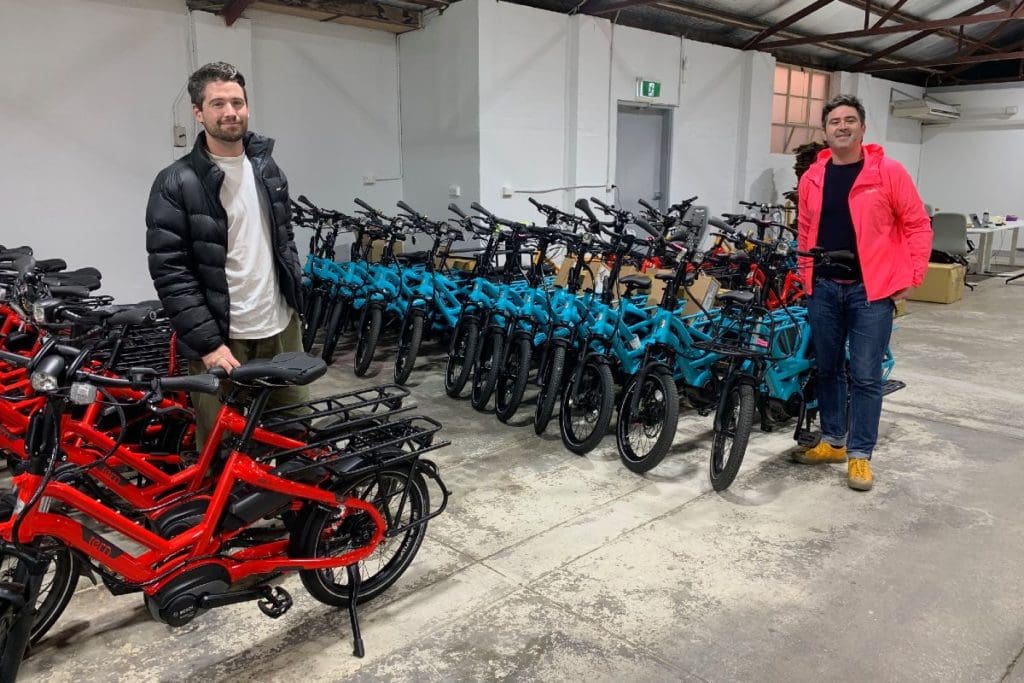
After trialling a number of e-cargo bikes they settled on the small-wheeled Tern GSD and HSD models in part because they have a ‘one size fits all’ design making their fleet management far simpler. Most of the components are also identical across the two models, an important consideration when they’re including mechanical servicing as part of their subscription package.
Once they had sourced their bikes and developed their business model, the next steps were refining their package to consumers, building their website, and selling subscriptions.
They started with just 12 bikes in November 2019, soon followed by another 100 across February and March 2020, just before covid hit. When these were very quickly fully subscribed, Ben and Dan knew that they’d struck a chord with consumers.
They then committed to larger and longer term forward orders.
Ben and Dan think their business is still at the ‘tip of the iceberg’ phase.
“You ride one of these things along the street with the kids on the back of it, and people still wave at you like it’s a freak show!” Dan said. “We’re focussed on giving it that sense that it’s a mainstream activity.
Like many others in the bike trade, Lug & Carrie ran out of stock last year, had a waiting list and a frustrating wait for new stock. Their website follows the IT company model in which there’s no phone number for customers to call for new enquiries. They need to book a consultation via the website.
“Most of our customers really don’t know anything about the bikes. They just know they have a problem, which quite often involves kids,” Ben revealed.
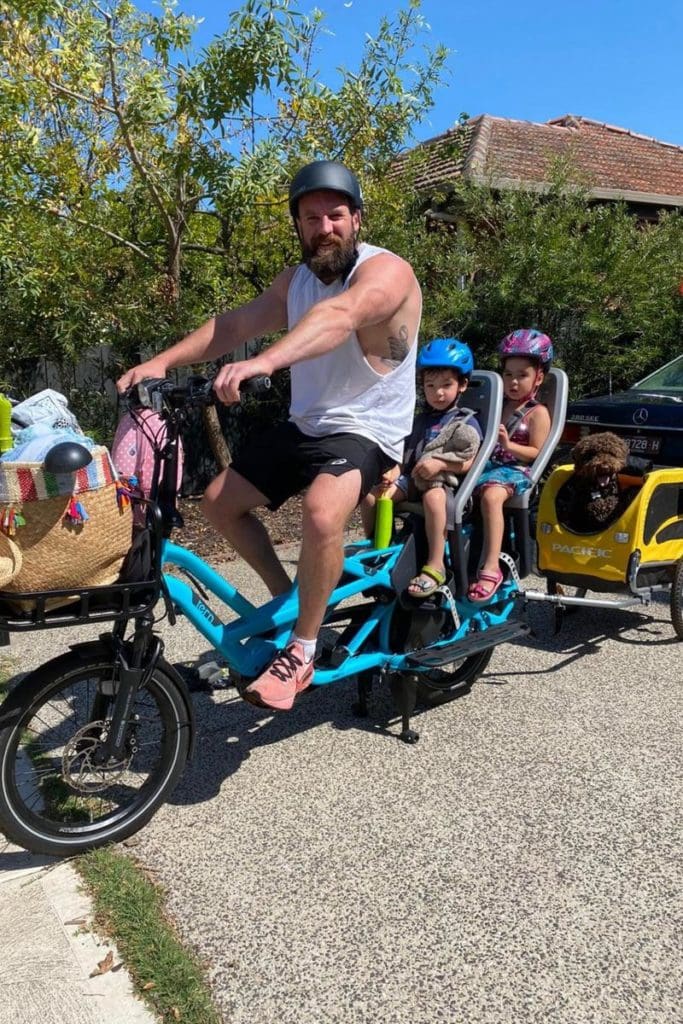
Ben and Dan have found that customers either drop out early, if it’s not for them, or stay subscribed for a long time. Customers don’t get to choose if their bike is brand new or has already been used by one or more previous customers. The price is the same, just like a hire car might be brand new or have 30,000 kilometres on the clock.
Lug & Carrie have mechanics on the road in vans to deliver and service their fleet of bikes.
So far, subscribers only get free delivery within a 25 kilometre radius of Melbourne’s CBD.
But interstate expansion is definitely within their sights.
“There’s a breakeven point on the size of the fleet and we’re passed that,” Dan said. “We’ll be in Sydney before the end of 2021.
“We want a nationally relevant, large-scale, fleet business that’s got both consumer and commercial arms, because they’re complementary. We’ve also built out a product that allows us to provide this for corporate and other organizations. We’re testing that.”
In the meantime, Lug & Carrie are focusing upon their current core customers.
“What we’re getting is a lot of non-cyclists, which is the real gamechanger, putting more people on the road,” Ben concluded. “I think a vast majority of our customers haven’t ridden in years, or stopped riding recently, mainly because of family situations, or they moved out to a suburb that they felt they needed a car for.”
“The number of people that we’ve guided about riding as a family and got moving on a cargo bike with their kids in a bit over 12 months, is hugely rewarding,” Dan added.
Join the Conversation:
What do you think about this new business model? Do you think it will take business from existing bike shops or help to ‘grow the pie’?

Looking forward to Lug & Carrie arriving in Sydney
A brilliant development. All strength to their small wheels and enterprise. Electric and cargo can start to dent the sprawl of Oz suburbs, not (quite yet) to inner city scale but open options for bicycle use over longer distances and up hills.
I’ve never understood why people think that getting more people on bikes more often will take business away from bicycle shops.